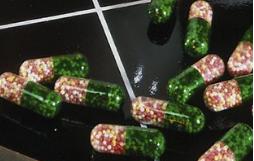Oct 14 2008
CERAM Surface and Materials Analysis has published a white paper highlighting how surface analysis can expose counterfeit medicines. It describes how technologies such as X-ray photoelectron spectroscopy (XPS) and Time-of-Flight Secondary Ion Mass Spectroscopy (ToFSIMS) are being used in novel ways to not only analyse the composition of various pharmaceuticals, but also to determine differences in the manufacturing processes involved.

The author of the white paper, Dr. Justine Bentley, explains how technology is helping to stem the trade in counterfeit drugs. She says:
“Counterfeit medicines are incredibly dangerous and represent a significant challenge to public health, so it is vital that drug manufacturers and authorities implement stringent QA processes. Surface analysis enables the identification of previously undetectable chemical copies and the technology is now so sophisticated that we can determine the manufacturing process of, for example, a particular tablet to find out if it has been produced by the correct licensed process. If it hasn’t, then that tablet is as much a potential health hazard as one that contains the wrong ingredient.”
According to the World Health Organization, counterfeit medicines are part of the broader substandard pharmaceuticals sector – medicines manufactured below established quality standards and, therefore, dangerous to patients’ health and ineffective for the treatment of diseases. They are deliberately and fraudulently mislabelled with respect to identity or source. The US-based Centre for Medicines in the Public Interest predicts that counterfeit drug sales will be worth an estimated US$75 billion globally in 2010, a staggering increase of more than 90% from 2005.
With more than twenty five years’ experience, CERAM Surface and Materials Analysis is Europe’s leading surface and materials analysis company, specialising in both the chemical and physical characterisation of surfaces. It remains at the forefront of research into fake drugs, while continuing to assist the pharmaceutical industry with product development and quality assessment as well as contamination identification and evaluation of packaging stability.
The white paper is available as a free download at:
www.csma.ltd.uk/pharmaceutical/counterfeit-drugs.htm